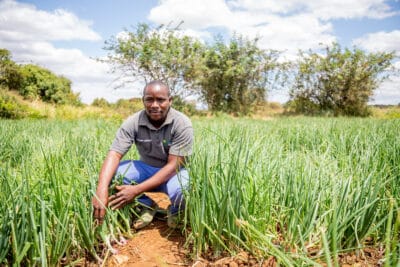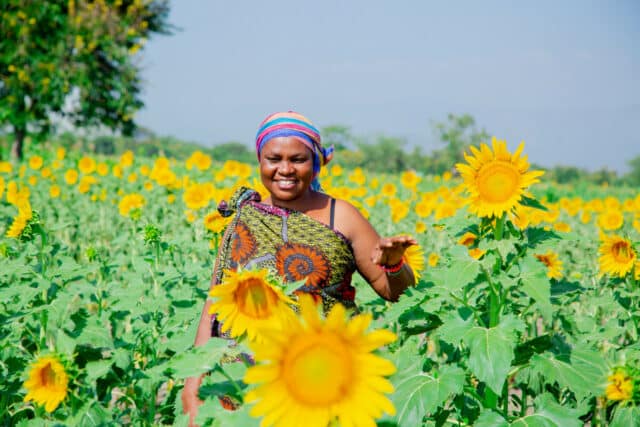Expert view
Kenya
21 November 2019
Could youth be the missing link to Kenyan food security?
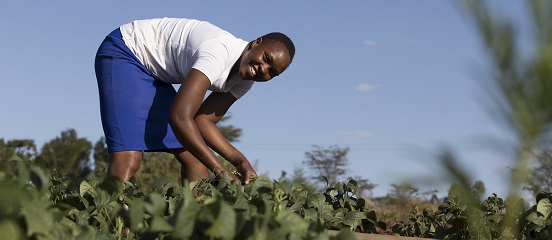
By Anastasia Mbatia, Technical Manager, Agriculture, Farm Africa
Kenya has a young population – approximately seventy percent of her people are below 24 years of age. Could the engagement of the 10 million youth of productive age in agriculture be the much needed panacea to food insecurity?
Can we make the allure of agribusiness override the demand for white collar jobs among Kenya’s youth? Against the backdrop of devolution, how do we incentivise young people to engage in farming and create a reverse migration pattern?
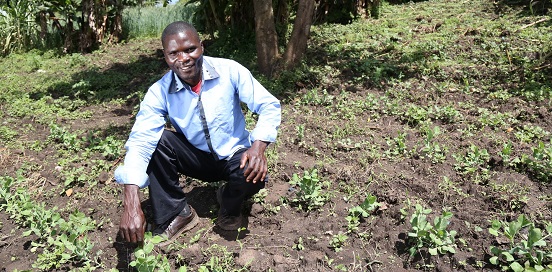
Despite considerable investment in agriculture, Kenya remains a net importer of food with one out of every three Kenyans unsure of where their next meal is coming from (Global Hunger Index 2018).
Reports indicate that there is a current deficit of 19 million bags of maize in the national granary after the delayed March to May (MAM) 2019 long rains. Kenya’s population is estimated to hit 65 million by the year 2030 (UNDESA 2017) and the glaring state of recurrent food shortages calls for long-term interventions to address the declining food production (KNBS Economic Survey 2017).
The Sustainable Development Goals (SDGs) aim to end hunger worldwide by the year 2030. Progress towards achieving SDG 2, Zero Hunger, is significantly off track with global hunger on the rise rather than falling. In Kenya, it’s difficult to see how SDG 2 can be achieved without fundamental change in the agricultural sector.
Twenty two percent of Kenya’s young people aged between 15 and 24 are unemployed (ILO 2016). Many are actively looking for white collar jobs, while there is a decline in youth engagement in agriculture. The burden of food production has been left to the older generation, with the average age of a Kenyan farmer being 60.
Older farmers are often unable to adopt new innovations that can ensure sustainable production. It is expected that by the year 2030, six percent of the global urban population will be composed of people under 35 years (UN Habitat Youth Statement 2016). Rural-urban migration is no different in Kenya, with nearly a third of the population living in urban areas.
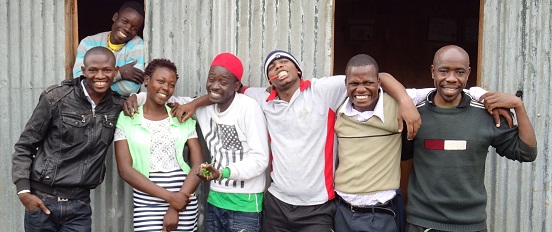
Young people’s low engagement in agriculture in Kenya can be attributed to a host of factors. Key among them is that youth don’t view farming as a profitable enterprise. Previous failures to successfully commercialise agriculture have resulted in widespread negative attitudes towards farming, with youth often associating agriculture with poverty.
In spite of glowing case studies of quick wins in agricultural ventures, young people’s interest in in farming as a career remains low. Presently, land productivity is not at its optimum due to low adoption of technologies, high costs of production, over-reliance on rain-fed agriculture, climate change, and farmers’ struggles to be profitable in the face of competition with cheap food imports.
Young people also face significant barriers to entry to agriculture due to their low access to land, skills and capital. The culture of land inheritance means that land ownership remains largely in the hands of older generations, while young people, especially young women, are typically excluded from owning or accessing land.
Urgent action is needed by the government to increase the profitability of farming and increase youth participation in agriculture. Key priorities for government support should be:
- Providing targeted technical and business advice to youth producer enterprises and first mile agri-businesses.
- Facilitating access to more affordable high-quality inputs to incentivise the adoption of productivity improving technologies.
- Supporting youth enterprises to access low-interest loans to enable them to invest in their farm business models.
These three priorities are closely intertwined as the first and second steps help support the development of youth enterprises so they are more able to secure and manage affordable financing.
One agricultural sector favoured by the youth is vegetable production, due to the short seasonality (45-90 days) of the crops and ease of selling the produce. Farm Africa tested the concept of boosting youth engagement in agriculture by working with 520 farmers in Trans Nzoia County to build crop business models for local and export vegetables. A shift from traditional (loss-making) food crops has been noted after the pilot recorded a 51 percent increase in annual household income and a 145% increase in group sales from the first to third financial year of enterprise operation (KES 9.8 Million to KES 25 Million).
Young people now account for 39 percent of those engaged in the vegetable value chain in Trans Nzoia County. This provides evidence that with appropriate targeting, young people can be motivated to engage in agriculture as a business.
The private sector is a critical player in agriculture. The local agro-manufacturing sector needs to be developed to help in alleviating the 20-50% post-harvest losses incurred by food producers (FAO 2014). Value addition minimises food wastage, increases the shelf life, and creates job opportunities for the youth and a demand for local raw materials. In turn, diversified local and export markets are likely to spur domestic production and investment.
Kenya’s youth bulge presents an opportunity to increase agricultural output and bolster food and economic sustainability. Food security is a major component of the government’s Big 4 Agenda. Action by the government to empower Kenya’s young people to gain access to the land and finance they need to engage in agriculture is key to underpinning it.
This blog was first published in the Daily Nation newspaper.

